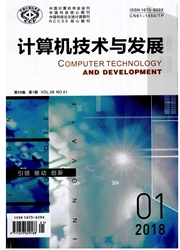

 中文摘要:
中文摘要:
当今,因特网的使用已经演进到以内容的分发和检索为主,但是目前使用的IP结构并不能很好地满足这样的需求。内容中心网络(Content Centric Networking,CCN)打破了传统的“主机—主机”的通信模式,将内容置于核心地位,是目前未来网络领域的研究热点之一。CCN将内容与主机分割开并将内容存储在网络节点中。任何存有内容的节点都可以充当服务器向用户提供服务,因此CCN可以高效地进行内容传输。CCN的这种优势来自于它可以进行网络内缓存,可以说缓存是CCN的基石。缓存策略的性能直接影响了整个CCN的性能。简要概括了CCN和IP的区别,介绍了CCN的一些核心概念和工作机制,给出了CCN中相关的缓存算法并分析了它们的优缺点。
 英文摘要:
英文摘要:
Use of Internet in today' s world has evolved to be dominated by distribution and retrieval of content, while currently used IP architecture cannot meet this demand. Content Centric Networking (CCN) breaks the traditional "host to host" communication mode, making content in the core position is one of the research hotspots. CCN decouples content from host and stores the content in every node. Any node can act as host and serve client if the requested content has been cached in it. Thus, CCN can deliver content efficiently. These advantages are mainly based on that CCN supports in-network caching,so it can be concluded that caching is backbone of CCN. The performance of the caching strategies directly affects the performance of CCN. The difference between the CCN and IP is summarized in brief, and then the key concepts and working mechanism of CCN are introduced. Finally, some proposed caching strategies have also been covered along with analyzing their advantages and disadvantages.
 同期刊论文项目
同期刊论文项目
 同项目期刊论文
同项目期刊论文
 期刊信息
期刊信息
